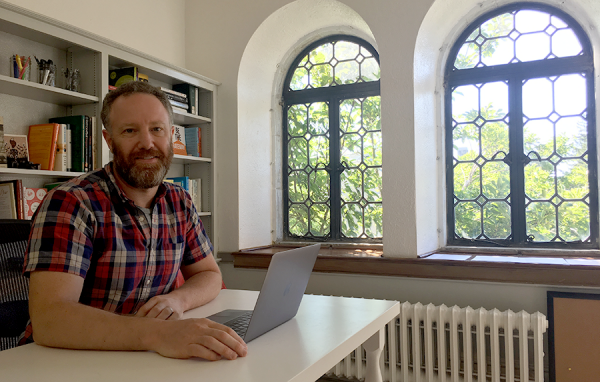I get emails like this all the time from writers:
“All the literary agents are telling me: ‘If you had a platform, I would represent you.'”
Why do they say this? A lot of books are thrust into the marketplace with a quiet “thud” — no readers, no sales, no reviews — and the agents want as much help as possible to prevent that from happening
Today I want to talk about how to assess your author platform in order to find clear, meaningful actions you can take in order to improve it and better develop your audience.
In the past couple of weeks, I’ve been conducting a “brand audit” for my company, WeGrowMedia. As I went through the process, I realized that it would be useful to reframe it for writers as an author platform audit. Even if you feel you don’t yet have a platform, this guide will help.
I will encourage you to do this way before you think you need it, and to do it on a recurring basis. I’m 8 years in to running my company, and I have done a brand audit like this many times. It is a great way for me to hone my radical clarity of what I do and why, and identify how I can best help the writers I serve.
Let’s dig in…
Remind Yourself of What Your Audience Wants Most
If you are a writer, your goals may be specific to the book you are writing or the place you are in your career. If you are 100% focused on getting an agent, consider what agents and publishers want and why. The short version is that they want you to:
- Write a great book.
- Identify the ideal readers are for your book. Don’t rely on vague demographics or descriptions. Be able to describe them in detail — why your book will resonate deeply with them.
- Have a keen sense of the marketplace. Publishing is a business, and if you are asking for collaborators to invest in you and your work, then take the marketplace seriously. Identify comparable books to yours.
- Develop relationships with colleagues who are connected to your ideal audience.
- Establish channels to reach your ideal audience. This could be social media, but it may include many others as well (more on that below.)
- Based on the list above, have ideas on how you can reach these ideal readers in more proactive ways — marketing, outreach, partnerships, events, collaborations, etc.
That is what a literary agent means when they say, “If you had a platform, I would represent you,” or even when they say “Come back to me when you have 10,000 Twitter followers.” They don’t really want that (you can literally buy followers, so that wouldn’t help them with their goals), they want the list above.
Regardless of whether you are seeking representation, you likely want to grow your audience. In that case, the list above applies as well. If you are self-publishing the list is probably even more important because you won’t automatically have a professional editing, marketing, and publicity team working on your behalf.
Remind Yourself of What Makes a Great Author Platform
Your author platform is not the number of social media followers you have. I can’t stress that strongly enough. Stop chasing the follower count number. I have seen so many writers or artists who have this super impressive social media follower count, but nearly zero connection to an actual audience who knows them and likes them.
What’s the difference?
When that person launches their book, it lands with the “thud” I referenced above. No one buys it. No one talks about it. No one reviews it.
I define an author platform as having two elements:
- Communication
- Trust
These are timeless and universal things that were just as applicable to an author in 1920, 1960, or 1990 as it is today.
Communication is about empathy and clarity: knowing who you want to reach, what they care about, and considering the best way to truly engage with them. It is as much about listening as it is talking.
This is why we even talk about social media. Social media is just a tool, but your focus needs to be on the person and how to truly connect with them.
I think people get distracted by the technology, and miss the point: this is about people. Let’s have Steve Jobs explain it, here is an excerpt from a 1994 interview:
INTERVIEWER: You’ve often talked about how technology can empower people, how it can change their lives. Do you still have as much faith in technology today as you did when you started out 20 years ago?
STEVE JOBS: Oh, sure. It’s not a faith in technology. It’s faith in people. Technology is nothing. What’s important is that you have a faith in people, that they’re basically good and smart, and if you give them tools, they’ll do wonderful things with them. It’s not the tools that you have faith in — tools are just tools. They work, or they don’t work. It’s people you have faith in or not.
The second part of platform — trust — focuses on how strong that connection is. When someone chooses to follow you on social media, that is one indication of trust. They want to hear from you consistently. So are actions such as signing up for your email newsletter, attending your book reading, pre-ordering your book, sending you an email, or even recommending your book to a friend.
Trust is also why marketers have talked a lot about the phrase “influencers” in the past decade. I don’t like that term because it feels too transactional in nature, and trust extends beyond that. But the crux of it is (please read this next line in a robot voice in your head): “You have a book that INFLUENCER X may enjoy. INFLUENCER X has a big audience who trusts them. If they recommend your book, you will get more sales. Befriend INFLUENCER X. Repeat with INFLUENCERS Y, Z, A, B, C, and so on…”
The Author Platform Audit — What to Analyze
Okay, now that we have reviewed what your audience wants most and the foundational elements of an author platform, let’s dig into the audit.
Chances are, you feel like you don’t have an author platform at all, or the one you have is not what you want it to be.
You are wrong.
I always remembered the advice I read years ago about what to do when you get laid off from a job: go home and update your resume. List out not just what you did in your previous work, but the impact it had on the people and organizations you worked with. It’s a huge confidence booster.
In the same vein, you likely have more of an author platform than you realize, it simply may not be organized in a way that feels actionable.
Create a document. I did this in a spreadsheet, but you can use a regular document or even just a sheet of paper. We are going to list out all of elements of your author platform.
Do NOT write down how many followers you have on Twitter or Facebook or Instagram. That number is useless, so ignore it.
Instead, I want you to:
- List out each place online or off that someone can connect with you. So may include your website, social channels, an Amazon profile, etc. Go ahead and Google yourself. (scary, right?!) See what comes up and make note of places you are featured online that you forgot about. Oh, and if you Google yourself and nothing comes up, that is a good reminder that you have work to do. Do people use Google to find books? Not really. But do they hear about a book recommendation from a friend, and then Google the name of the author to find it? All the time! This is the “communication” aspect of author platform. If people can’t find you, that is a problem.
- How do you proactively reach out to people, how often, and how effective is each? This includes email newsletters, the content you share on social media, speeches you give, podcasts you publish, etc. A lot of people feel that they are on a social media treadmill that takes up a lot of time and feels completely ineffective. Give this a good hard look to see where you are adopting a vanilla strategy and how you can connect with people in more meaningful ways.
- Analyze each place that people can find you: all the things you just listed out. Note obvious ways you can update or improve each of these places. Does your Amazon profile incorrectly list your books? Does your LinkedIn bio still not mention your last two books? Does your author homepage still say, “Preorder now! My book launches Sept 8, 2015!”
- Collect all of the various ways you describe who you are and what you do. I see this all the time: an author describes themselves in 4 different ways on 4 different channels. If you can’t effectively communicate these things, how can you expect people to truly hear you?
- Write down your professional collaborators. These are people you have worked with in your life as a writer: editors, book cover designers, proofreaders, etc.
- Then list out professional colleagues who you know. People you could email and they would reply. This likely includes other authors.
- Identify ideal readers for your books that you actually know or could reach out to. This is a biggie. If you don’t understand your ideal readers, how can you reach more of them?
- Note the people you know who support writers and books. This could be booksellers, librarians, those who run writing groups or literary festivals.
- List out comparable authors — those who write books similar to yours. Even if you don’t know them personally, write their names down.
- Identify communities that your ideal audience connects with. This could be an online forum, a physical conference/event, a person they love and follow online, etc.
- Review your writing practice. Everything here begins with your craft. If you struggle to find the time and energy to write, note that. Consider how you can make the creative process a core part of your weekly schedule.
People tend measure the wrong things, they only measure social media followers, and always conclude their single takeaway as: “Get more social media followers.” But that isn’t the answer.
Now Take Action
Likely you are now sitting here with these big lists and thinking, “Um, now what, Dan?” Do this:
- Ensure all of the places people can connect with you are radically clear about who you are and what you create. So that may mean updating your website messaging, your Twitter bio, your LinkedIn summary, etc.
- Reconnect with collaborators and colleagues who you haven’t reached out to in awhile. Just say hello, ask them what’s going on in their life, and give them a brief update on your writing.
- Reach out to other authors who write work similar to yours. These should be your professional colleagues. Too often, I ask writes if they know other authors and they say “No.” Fix that. How can you succeed in a profession if you don’t know anyone else who does the kind of work you do? Send an email to people whose books you admire. Tell them you like their work. It’s really that simple. Who wouldn’t want to receive that email?!
- Consider how you can create or revise your social media and/or outreach strategy so that it focuses on communication and establishing trust with your ideal audience. Sometimes these things are simple. For instance: “I write literary fiction, and I find that my ideal readers love being reminded of the power of books to heal. So I’m going to share photos when I go to independent bookstores, images of books I love, and little stories of how a book changed someone’s life.”
For each step, focus on the person you hope to connect with, not about the tools you use to do so.
This process may raise a lot of questions about what direction you should take. When possible, do it with a collaborator. I do audits like this all the time in my one-on-one consulting with authors.
Let me know how I can be of assistance to you.
Thanks!
-Dan

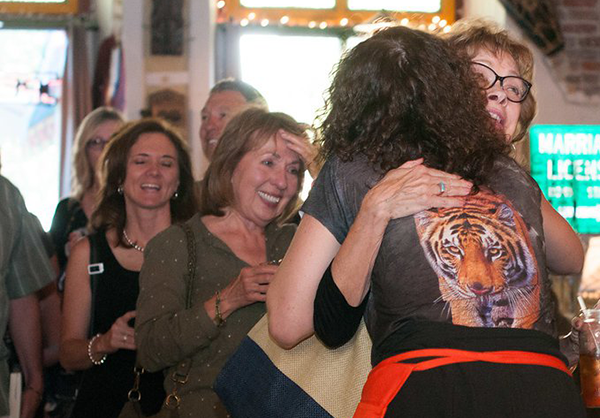
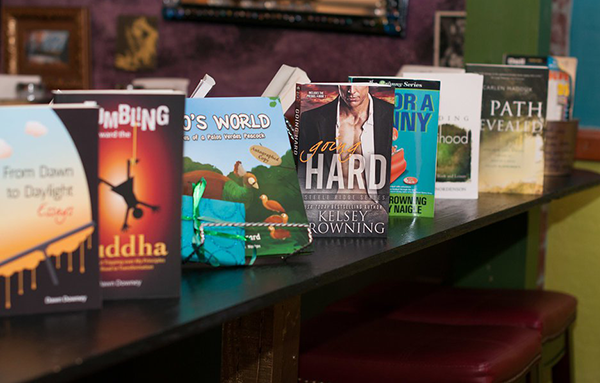

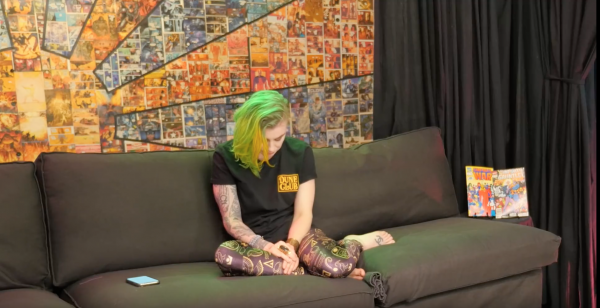
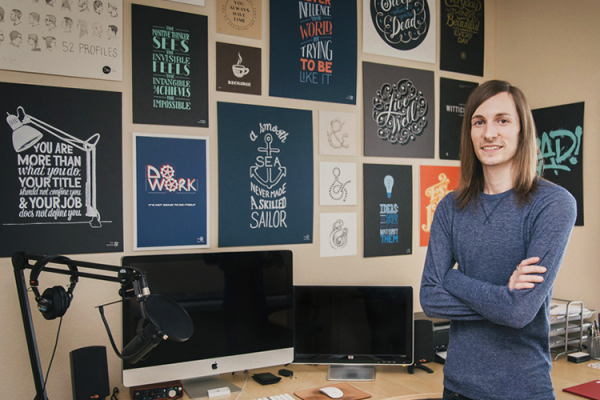
 Brandon is wildly successful, with millions and millions of followers. He roams the streets of New York, asks strangers if he can take their photos, and asks them questions about their life. Often, their answers are profound.
Brandon is wildly successful, with millions and millions of followers. He roams the streets of New York, asks strangers if he can take their photos, and asks them questions about their life. Often, their answers are profound.